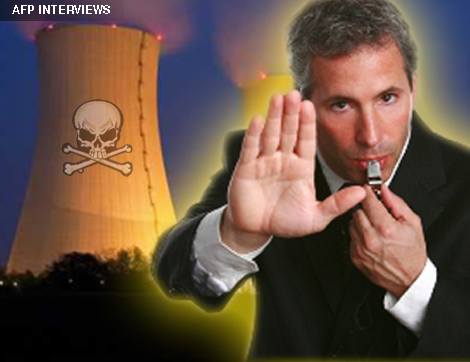
Insiders claim regulatory agency has been deliberately withholding truth to cover for incompetence
By Keith Johnson
Experts claim that dams located upstream from dozens of U.S. nuclear power plants could soon overflow and lead to a major disaster on the scale of Fukushima. Why haven’t the American people been informed of this? According to two courageous whistleblowers at the Nuclear Regulatory Commission (NRC), the agency has deliberately withheld this information from the public to cover up for their own failures in addressing these serious safety concerns.
Larry Criscione and Richard H. Perkins both work for the NRC’s Division of Risk Analysis. In 2010 Perkins helped prepare a report on dam safety that was intended to become a matter of public record. However, when a version of the report was released in March of this year, Perkins found that much of his key analysis on potential flood threats had been blacked out.
Perkins responded by submitting a letter to the NRC’s Office of the Inspector General.
“The Nuclear Regulatory Commission staff may be motivated to prevent the disclosure of this safety information to the public because it will embarrass the agency,” wrote Perkins in his letter. “The redacted information includes discussion of, and excerpts from, NRC official agency records that show the NRC has been in possession of relevant, notable and derogatory safety information for an extended period but failed to properly act on it.”
This AMERICAN FREE PRESS reporter recently spoke with NRC whistleblower Criscione, who also decided to go public after learning of the heavy redactions in Perkins’s report.
When asked to identify the specific safety concerns he and his colleague share, Criscione replied: “We now believe that dams fill at a rate higher than they did 30 years ago. This poses a threat to a good fraction of the American nuclear fleet. There are 104 plants, and it’s an issue for approximately one-fifth of them.”
Millions of Americans would be affected should these nuclear plants go the way of the Fukushima facility in Japan, which was hit by a devastating tsunami on March 11, 2011, resulting in a meltdown.
Criscione continued: “These plants have been downstream of these dams for decades, and when we originally gave them their licenses, we thought the failure rates for these dams were about 100 times less than we currently think they are today. I don’t fault the people who license those plants, but engineering concepts have changed over the last 40 years and we’re not going back and readdressing them in the manner that a responsible agency would.”
The NRC argues that the redactions in Perkins’s report were necessary to prevent terrorists from exploiting plant vulnerabilities.
Criscione doesn’t buy it.
“I have not seen anything to indicate that we’ve made any effort at the NRC to determine what exactly the security threats are,” said Criscione. “For a few plants, we’ve known about the vulnerability for six or seven years, and we’re claiming that it’s such a security threat that we can’t present it to the American people? This is hypocritical. If you’re going to conceal something for a year or so while you investigate the security aspects of it, that’s common sense. But you don’t withhold it for seven years and do no studies whatsoever. Your average citizen wouldn’t expect that from a regulatory agency. If your regulator believes there is a security threat, he’s going to investigate it or do something to mitigate that threat.”
Criscione has sent letters of concern to NRC chairwoman Alison MacFarlane and Sen. Barbara Boxer (D-Calif.). When asked if this has helped compel the agency to take action, Criscione replied: “I guess the answer is no. I haven’t been interviewed by the inspector general” and “I haven’t received any indication that things have changed at all.”
Although Criscione is critical of the NRC’s inaction and secrecy, he does not suspect they are concealing a more nefarious agenda.
“It’s just general incompetence,” he opined. “The NRC is an agency of [about] 3,000 people and there is a fair amount of turnover. I think we just dropped the ball at peak times and critical stages throughout the last couple of years and the issue didn’t get addressed to the level it should [have been].”
This AFP reporter also consulted Arnold Gundersen, a former nuclear power executive who served as an expert witness in the investigation of the Three Mile Island incident. Gundersen applauds Perkins and Criscione for going public, but has a different take on why the NRC is failing to enforce strict safety regulations.
“We’ve got a pro-nuclear commission and employees at the NRC who are painfully aware that if they do any major modification to these facilities the industry will shut plants down rather than fix them because they become too expensive to operate,” said Gundersen. “The NRC guys get paid by the number of reactors that are out there. So if 20 reactors shut down, NRC funds dry up by about 20%. That leaves them with more people to do less work. My guess is there would be layoffs. So it’s in their best interest to regulate up to the point of modification.”
Keith Johnson in an investigative journalist and host of the Revolt of the Plebs radio program.


